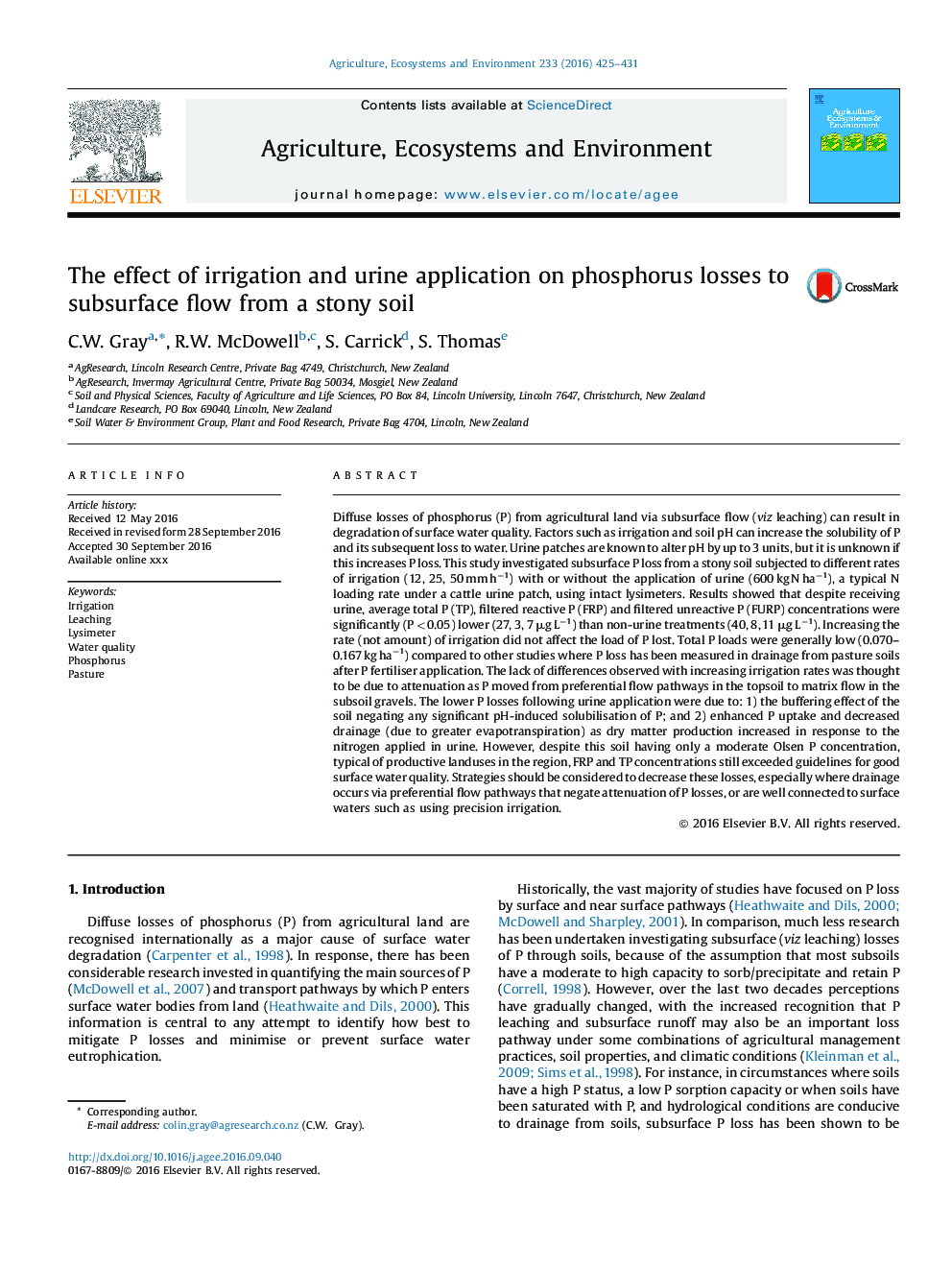| کد مقاله | کد نشریه | سال انتشار | مقاله انگلیسی | نسخه تمام متن |
|---|---|---|---|---|
| 8487296 | 1552019 | 2016 | 7 صفحه PDF | دانلود رایگان |
عنوان انگلیسی مقاله ISI
The effect of irrigation and urine application on phosphorus losses to subsurface flow from a stony soil
ترجمه فارسی عنوان
اثر آبیاری و ادرار بر میزان فسفر به جریان آب زیرزمینی از خاک سنگی
دانلود مقاله + سفارش ترجمه
دانلود مقاله ISI انگلیسی
رایگان برای ایرانیان
کلمات کلیدی
آبیاری، شستن لیزیمتر، کیفیت آب، فسفر، مرغ،
موضوعات مرتبط
علوم زیستی و بیوفناوری
علوم کشاورزی و بیولوژیک
علوم زراعت و اصلاح نباتات
چکیده انگلیسی
Diffuse losses of phosphorus (P) from agricultural land via subsurface flow (viz leaching) can result in degradation of surface water quality. Factors such as irrigation and soil pH can increase the solubility of P and its subsequent loss to water. Urine patches are known to alter pH by up to 3 units, but it is unknown if this increases P loss. This study investigated subsurface P loss from a stony soil subjected to different rates of irrigation (12, 25, 50 mm hâ1) with or without the application of urine (600 kg N haâ1), a typical N loading rate under a cattle urine patch, using intact lysimeters. Results showed that despite receiving urine, average total P (TP), filtered reactive P (FRP) and filtered unreactive P (FURP) concentrations were significantly (P < 0.05) lower (27, 3, 7 μg Lâ1) than non-urine treatments (40, 8, 11 μg Lâ1). Increasing the rate (not amount) of irrigation did not affect the load of P lost. Total P loads were generally low (0.070-0.167 kg haâ1) compared to other studies where P loss has been measured in drainage from pasture soils after P fertiliser application. The lack of differences observed with increasing irrigation rates was thought to be due to attenuation as P moved from preferential flow pathways in the topsoil to matrix flow in the subsoil gravels. The lower P losses following urine application were due to: 1) the buffering effect of the soil negating any significant pH-induced solubilisation of P; and 2) enhanced P uptake and decreased drainage (due to greater evapotranspiration) as dry matter production increased in response to the nitrogen applied in urine. However, despite this soil having only a moderate Olsen P concentration, typical of productive landuses in the region, FRP and TP concentrations still exceeded guidelines for good surface water quality. Strategies should be considered to decrease these losses, especially where drainage occurs via preferential flow pathways that negate attenuation of P losses, or are well connected to surface waters such as using precision irrigation.
ناشر
Database: Elsevier - ScienceDirect (ساینس دایرکت)
Journal: Agriculture, Ecosystems & Environment - Volume 233, 3 October 2016, Pages 425-431
Journal: Agriculture, Ecosystems & Environment - Volume 233, 3 October 2016, Pages 425-431
نویسندگان
C.W. Gray, R.W. McDowell, S. Carrick, S. Thomas,
